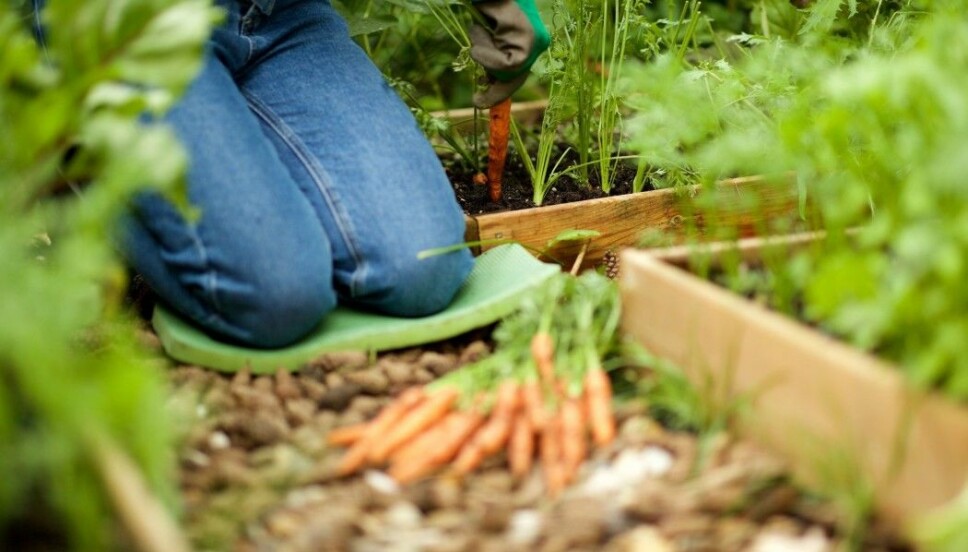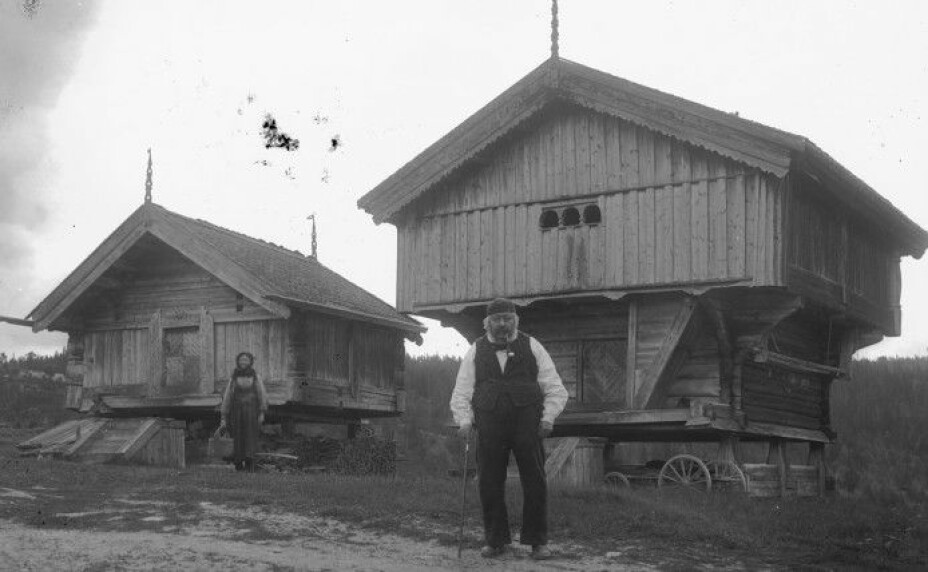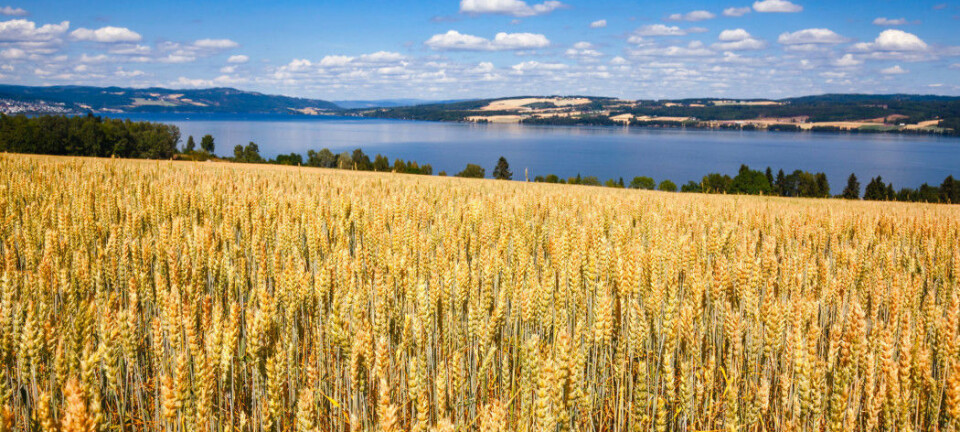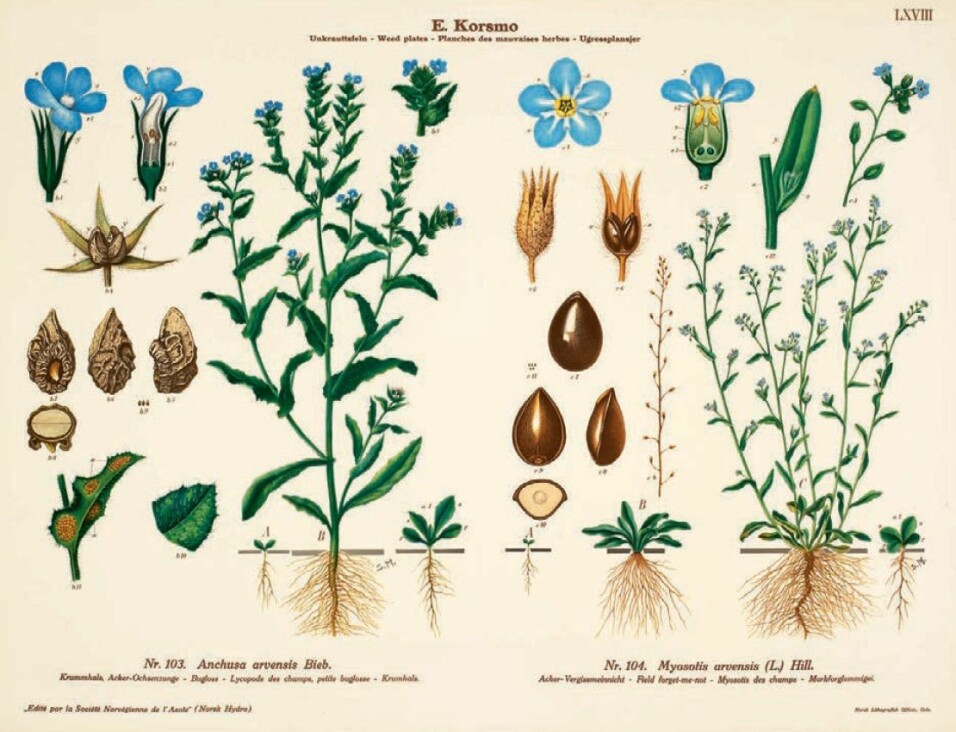
More Norwegians want to grow their own food
Norwegians have been buying supplies for their kitchen gardens like never before, but it has not always been so common for the average Norwegian to grow fruits and vegetables.
Earlier this spring, a Norwegian farm and garden cooperative called Felleskjøpet reported on recent sales growth in the garden and outdoor category.
“There’s a great deal of evidence indicating that many Norwegians are choosing to use their new everyday life to return to their roots and find their inner farmer," said Trond Fidje, director of retail sales for the cooperative.
Hanne Lauritzen, communications manager at Felleskjøpet, wrote in an email to sciencenorway.no that the cooperative has seen a clear trend for Norwegians to be increasingly interested in growing their own food.
“Within the seeds and onions category, we already have a doubling in sales, as well as a 50 per cent increase in soil, fertilizer, bark and other soil improvements,” she said.
The company is also experiencing high demand for seed potatoes, with a growth in sales of 80 per cent compared to last year.
“Several of our stores are already sold out, and we are working to obtain more seed potatoes to meet demand,” says Lauritzen.
An early spring, combined with more attention to Norwegian food production and self-sufficiency, are probably reasons why more Norwegians want to grow their own food this year, Lauritzen speculates.
Home gardening is flourishing in the United Kingdom and the United States
It is not just in Norway that more people have started growing their own food. Seed sales in the UK and the US have skyrocketed in connection with the coronavirus epidemic, the BBC writes.
"The seed industry has not seen anything like it since the Great Depression," Jere Gettle, owner of Baker Creek Heirloom Seeds in Missouri, told the BBC.
The British organization The Royal Horticultural Society shares knowledge about horticulture. They report a significant increase in visitors to their websites. For example, 500 per cent more people read about composting in March this year compared to 2019.
Reuters has also written that seed companies in the United States, Russia and Canada are seeing a lot of demand.
Have seen the trend for several years
In Norway, the interest in growing food hasn’t quite come out of the blue.
Annechen Bahr Bugge is a sociologist and researcher at the Consumer Research Institute SIFO, at Oslo Metropolitan University (OsloMet). She studies eating habits, food and food history.
Bugge says that more people have started to grow their own food in recent years. Researchers also see that Norwegian food, local food and Norwegian traditional dishes have become more popular.
“There has been an increasing trend in sales in recent years away from ornamental shrubs and over to edible plants and herbs. People are growing foods in pots and planters, in their windows and in the garden,” says Bugge.
“I think this trend has only gotten stronger this year,” she said.
Bugge did a survey in 2015 where she found that many Norwegians were growing or gathering food themselves.
Over the last 12 months, as many as 51 per cent of Norwegians had harvested berries, fruits or vegetables from their own or others' gardens. Two out of ten ate food they had harvested or gathered several times a week.
Forty-five per cent had grown their own herbs, either indoors or outdoors. Just over half of those surveyed had either given or received food gifts in the last 12 months, such as homemade jams, game meat, or berries.
Only the richest had fruit trees before
More Norwegians this year have dug up a good part of their lawns to plant potatoes. Others have purchased raised garden bed frames, or put out pots of tomato plants and herbs on their decks. Some may have planted new berry bushes and plum trees.
But it has not always been so common to grow your own vegetables, berries and fruits in Norway.
“Vegetable gardens, or what were then called cabbage gardens, are older in Norway than orchards. Orchards were only something the richest could afford,” Bugge said.
She has written a book called Fattigmenn, tilslørte bondepiker og rike riddere (Fried crullers, apple brown betty and grilled sandwiches), which looks at eating habits in Norway from the 16th century to the present.
“Historically, fruits and vegetables have not been a very central part of the Norwegian farmer's diet. They ate a lot of grains, potatoes, and sour milk. Fruit was grown in small quantities, and it was extremely exclusive for a long time,” says Bugge.
A little green in the diet
The kitchen garden can be traced back to medieval cabbage and turnip gardens, Bugge writes in her book. In the 18th and 19th centuries, cabbage and turnips were still the most cultivated vegetables in Norway, apart from potatoes. Some people also grew onions, peas, cabbage, thyme or carrots.
But vegetable cultivation does not seem to have been very widespread among most farmers. It was more common on upscale farms.
Several sources describe the Norwegian diet in the past as rather monotonous.
Most diets were composed of porridge, milk products, potatoes, butter and flat bread. People didn’t eat much fresh food, and meat and fish were often salted and smoked, Bugge writes. Meat was often stored for years before being eaten.

Wartime kitchen gardens
Making berry jams is also part of the more modern food culture.
“Sugar was expensive, it was only when sugar became cheap and Norwegian canning jars came onto the market that people started to make more jam. Jam making and pickling foods really took off in the early 1900s,” says Bugge.
World War II spurred a boom of growing and gathering food among the Norwegian population.
“At that time, many imported goods were replaced with Norwegian goods. People used berries and what they found in nature in a different way,” Bugge said.
Many homeowners grew vegetables in a kitchen garden or used their lawns for pasture, Bugge writes in her book. People raised rabbits and pigs, and it became more common to pick berries and mushrooms. A number of books were published on how to use wild plants in food.
More concerned with locally grown foods
These days, people have access to all kinds of seeds, and information on how to succeed in growing vegetables is just keystrokes away. Anyone who wants to and has a place for them can grow fruit trees.
Bugge believes that the increased interest among Norwegians in growing their own food this year is because they have become more interested in locally grown food. But it may also be because people had more time on their hands this spring.
“Cooking is a hobby for many people. We now spend about 12 per cent of what we earn on food, meaning food has basically become very cheap. If you really want to give the best of yourself to your guests and family, then you give of your time,” she says.
“When you can bring a dish with ingredients you have grown, harvested and cared for, it's all about giving people your time. On the one hand it involves physical labour, but it also involves caring,” she says.
Bugge says that many people have jobs where they work with their heads and sit quietly in an office. For that reason, people like to use their hands during their free time. This is reflected in the fact that books about knitting, needlework and gardens often sell well, she says.
Want natural food
Furthermore, Norwegians’ interest in growing their own food is also about wanting ‘natural food’, Bugge believes.
“When I surveyed food advertisements, one of the most central adjectives that was used was ‘natural’ food. It is used as a selling point everywhere,” she said.
“At the top of the consumer's priority list is to have a diet based on unprocessed material with fresh, healthy ingredients. Food should be clean and natural, with the fewest possible additives and contaminants,” she said.
Bugge’s findings have made her think about what makes natural food so important to consumers.
“I think it is seen as an effective solution to the dilemmas people experience regarding health, the environment and ethics,” she said.
“Consumers are concerned about their own health, about avoiding residues from medicines or pesticides, and what we do with nature and animal welfare. If the food is natural then that addresses at least some of these dilemmas in a way. The food is not unhealthy and it is not bad for nature, the environment, animals or those who have produced it,” she said.
“We are increasingly concerned that the food choices we make not have negative consequences for ourselves and the environment,” she said.
Translated by Nancy Bazilchuk
Reference:
Annechen Bahr Bugge: " Fattigmenn, tilslørte bondepiker og rike riddere - Mat og spisevaner i Norge fra 1500-tallet til vår tid" (Fried crullers, apple brown betty and grilled sandwiches- Food and eating habits in Norway from the 16th century to the present). Cappelen Damm Akademisk, 2019.
———

































